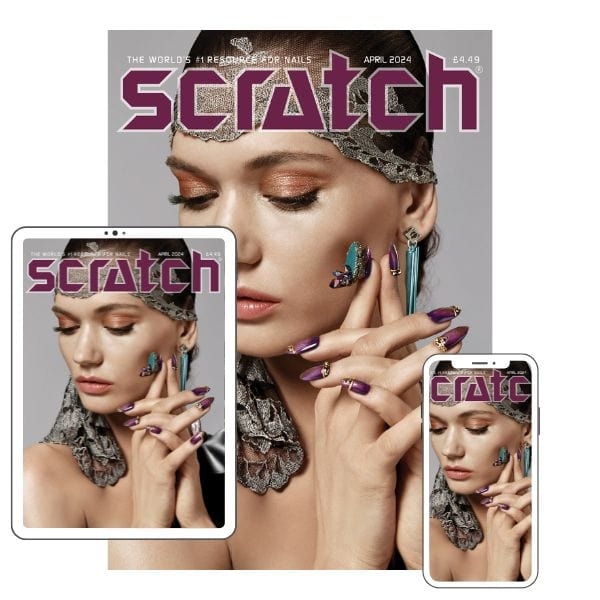
Beauty marketing on a budget: 5 steps to success
By Guest Writer | 05 July 2017 | Business, Expert Advice, Feature

Tom Ferris, owner of Blackwell Ferris Marketing, reveals how to maximise your marketing success – even when your budget is limited
One of the biggest issues with a new business is how to market when budget is an issue, so this month’s blog post is all about tips and tricks to get started with your business marketing.
Below are five steps which should have your marketing up and running in no time. Although best suited to start-up nail techs, those of you with a year or so experience should also pick up some tips.
- 1. Free customer loyalty building and complementary services
As it takes time to make your customers look good, seize the opportunity to get the gossip on what makes your client ‘tick’. Chatting is also a great chance to get some honest feedback and see what other things they are interested in.
By bonding with your client, you are strengthening loyalty, finding ways of offering them extras and possibly gaining the custom of their friends. Find out what they like and use that as a hook to get them to keep coming back and to sell more services. If, for example, your client comes in for manicures and you know they’re about to go on holiday, why not lead the conversation onto whether they have their wardrobe ready for the beach. Then, perhaps, remind them that they will want their feet pampered for wearing flip-flops and sliders this summer!
A helpful approach will make them thankful you mentioned it and you’ll sell another service. Then there is the chance to sweeten the deal by offering them, and a friend, a package deal if they both book in and have a pedicure done at the same time. This is especially good if their friend has never tried you before – a potential new customer!
So, before you know it, you’ve just sold a new service through your word-of-mouth marketing directly with the customer (cost: £0) and you’ve sold a small loyalty discount to them and their friend, possibly creating another loyal customer from the activity (cost: small discount).
- Strong website and email list
Often, the basics can be sorted with little or no cost. Although I’m not a big supporter of free websites, free logo design and free social templates, I’m also a realist so I understand that there is a time and a place for free tools. We don’t all start in business with a budget so make the best of what you’ve got. So I’d suggest to start off with free websites such as those available on Wix and WordPress.
As many clients will use websites as their go-to, even in this ‘new age’ of social media popularity, naturally something’s better than nothing. Then, when you’re up and running, get hold of a quality local web designer who can give you the unique and ‘professional’ look and feel that a free site simply can’t provide.
One service I do fully recommend that is free for the many is MailChimp. This is a web based service that allows you to manage customer email/contact lists (aka CRM), email to them from a generic email account in a format that looks professional. It also allows you to track the progress such as open rates and link clicks, so you know if your emails are working and being read – or even better that your customers are fully engaging by clicking images, links and heading to your website, social media pages or offers.
- Interest groups – join the conversation
Facebook has recently re-aligned it strategy to push users towards meaningful communities in the form of ‘groups’. This can range from a group where people sell things (‘free, for sale or wanted’) to interest groups such as ‘Fans of Harry potter UK’ or information groups such as ‘Manicure help for nail tech professionals’. Whatever the subject, there are many opportunities for you to be involved in a social group and add value to the conversation.
There are two types of groups that may be of particular use:
Community or activity group
An example of this would be ‘Ladies who lunch – Wiltshire’. This is clearly an interest group that isn’t about nails necessarily, but it is aimed at a select community who could possibly be interested in getting suggestions or feedback on beauty related conversations. Here you must always contribute and not plug; so add your thoughts on subjects and by all means mention what you do, but never post selling your treatments. You’ll get more interest in you and your page if you are subtle and are of value to the group. Blatant ads are often strictly banned from these groups so familiarise yourself with the group etiquette before posting.
Professional or industry group
This may be a group of therapists that discuss only industry information and professional problem solving. Here, you should take the same approach, but aim to network and connect with like-minded people. You’ll be surprised how often a popular technician can be overbooked and want to suggest reliable techs to send their ‘last minute’ customers to that they cannot provide for. These opportunities only come from networking and building a strong reputation – all with the only cost being a few minutes a day (or eve!) chatting in a group.
- Content building – make it relatable
When starting up on social media do the simple and the obvious first:
- Make sure your name and branding is the same as your website and your other social media platforms. This creates a familiar image and will reassure your customers and potential clients that they’re in the right place.
- Make sure that you have some photos and posts before you launch. Even if it just says hello and a little about you and what you do – or some simple photos of your workspace or salon.
- Next, make sure all of your friends and family know you’re there, so share via your profile (on Facebook) and invite everyone on your friends’ list to like your page – you’ll be surprised how many quickly take up your invite and follow. You’ll already be building an audience without realizing!
- Always make sure that anything you post is consistent. Although you don’t want to copy and paste the same thing over all platforms, it’s good to keep the same message and tone on all methods of communication, including social media.
- Before you invest time and lots of money on competitions and large campaigns, experiment while building an audience. It’s important to learn about what your audience likes to see.
- The best way to begin is to show off your work, perhaps using before and after pictures. Remember to make sure you brand your images with a logo board or watermark your photos with a free phone app so no one steals your hard work.
- Run an event and drive some local PR
Email your local press editors and writers, explaining your story and tell them you think you’ve got a story that their readers will be interested in: RELEVANCE is key. So before you contact a local newspaper, for instance, read a couple of editions noting any themes running through them – are there lots of stories about local employment, booming economy or young entrepreneurs? If so make your story about one of those things.
Maybe you’re opening a local spa and it means you’re employing three new therapists and looking to train two apprentices within your first year of trading. All of these can make a great hook for your story and will grab the attention of the person writing the content for the paper. The same goes for local magazines: look them up, find out their hooks and give them an email. It’s free advertising and is often much more effective than an advert.
If you’re still struggling for a ‘hook’ then create a launch event. Pick an eve or day that’s good for you and invite people to try out treatments and put out some treats or drinks for your visitors to have. Make it feel special and give new clients a reason to come along and see what you have to offer. Perhaps you could offer pre-book discounts: “book your next three treatments over the next 6 months and get 25% off”. That way you can take money on the day and start booking up your calendar for the long run. The press coverage will raise awareness and entice potential clients to come along and see you – even if only for free cakes and sweets.
Top Tip: use the event to build rapport with your local journalists and then invite them back for a free treatment in exchange for a review – it’ll start building you a positive reputation if you do an excellent job!
Finally… Remember to monitor your success along the way. Appreciate what works and what doesn’t and then naturally do more of what works and less of what doesn’t – or tweak and try again. Then celebrate often because it’s hard work working for yourself.

